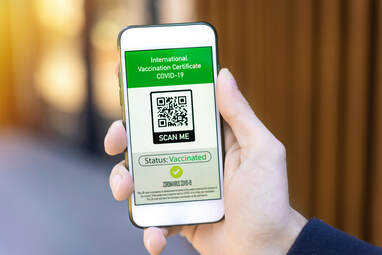A well-known retail company incorporated the virtues of gamification in such a simple yet impactful way, that it left the users wanting for more. Instead of directly handing over the discounts, the company made the users earn it, by simply playing spin the wheel, know the answers, and a few other games. The outcome made the users feel instant gratification, special, and this piqued their interest. Growth Engineering – Online Learning Engagement Experts, defines gamification as taking something that is not a game and applying game mechanics to increase user engagement, happiness, and loyalty! Here are a few ways to use gamification to boost user engagement.
1. Game mechanics
In simple words, game mechanics is a sort of governing body that manages the users’ actions and feedback. Designing the elements plays an important role here. Here are some of the game mechanics that will intrigue the users.
- Challenge
Everyone loves a challenge. Why? Because of the gratification that the user is given at the end of the play. Even if the play results in a loss, it inspires the users to take up a new challenge until they win. Motivate the users to finish the task by providing eye-catching rewards.
- Points
This system is an extension of the badges’ element. As the user processes in the game, their inquisitiveness builds up. Gratifying their hard work, in the form of points will add value to your product and aid in keeping the user’s attention in check.
- Scoreboards
The intent of doing better than the others drives a person to achieve the impossible. Scoreboards come with a detailed performance chart of all the available players. This encourages the users to keep giving their best.
- Levels
Increase the level of complexity when the user completes a hurdle. The complexity is what makes the game fun.
- In-app currency
Rewards based on the user’s performance can be in the form of currency as well. Allow the user to buy something valuable in the app. Providing extra lives pushes them to keep going on in the game. For instance, Starbucks’ in-app payment approach is a sure shot hit amongst its users. It allows the user to earn stars for their spending. Starbucks rewards this gesture by giving them free drinks or meals.
- Badges or Stickers
Rating the user’s performance positively and exclusively, certainly makes them feel special. Badges are a visual representation of how the user has excelled so far. Reward the accomplishment with a badge or sticker. For instance, Duolingo, a language learning app, enables its user to track their performance. It even allows social interaction and encourages them to collaborate with friends. To reward the user’s performance, Duolingo gives them badges after completing a certain task. It even has a point-based reward system and scoreboard.
2. Get creative
There is no limit to your imagination when it comes to incorporating gamification. Advertising in a creative way will spike the user’s interest. Understand your target audience, and market accordingly. For instance, the user engagement approach handled by Google Pay is quite intriguing. Globally, it has over 150 million users. They usually come up with a reward system depending on the occasion. To add to that, the user can earn up to 100 points for inviting new users. And after every transaction, the user wins a reward without fail. All this adds in captivation the user’s attention.
3. Quirky collaborations
To make the reward system more appealing, collaborating with other well-known brands will definitely boost your game. For instance, if the user is regularly using your product, to appreciate their loyal, you can reward them with in-house currency, points, or a discount on another brand by collaborating with them. Giving outside incentives is an excellent approach to engage the users.
4. The escapist approach
Most users are fed up with their mundane life. What they look for is escapism. Transform your services, products, and communication by entering the uncharted territory of ‘escaping the reality’. To do so, work on providing the following…
- A dreamy user interface.
- Allow the user to customize their profile.
- Get creative by offering them a plethora of avatars to use as their profile pictures.
5. Promote healthy competition
To broaden your brand’s establishment, motivate the user to challenge their real friends as well as strangers. This will help to rope in new customers. And winning the game in the presence of their friends gives them a sense of satisfaction.
Final thoughts
For App-Scoop, customer satisfaction and user engagement are of the utmost priority. App-Scoop is fully aware of what gamification brings to the table. And we have been incorporating game mechanics for user engagement for a long time. Our recent project Deleezy, a delivery-based application and a few others, have become an instant hit, courtesy of the way it was built and our idea of integrating the method of gamification to deliver results. It goes without saying that gamification is the present and the further. This segment comes with a surety of high growth and utmost user engagement. App-Scoop is up to date when it comes to integrating the latest technologies in our services. Gamification has the ability to make turn your application into an overnight hit. And for that, one must understand its elements and application thoroughly, which we do! App-Scoop abides by its vision of delivering excellence. If you wish to collaborate with us, kindly contact: https://app-scoop.com/contact-us.html
References




